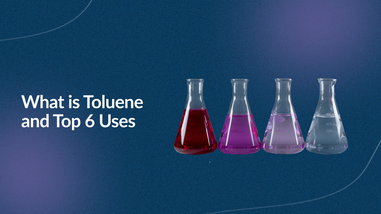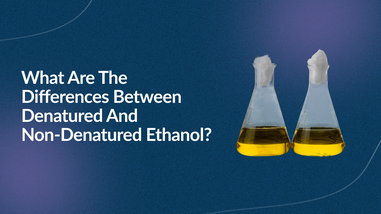- No products in the cart.
A lab setting is a dangerous place where airborne and bloodborne pathogens can be found lurking, either as visible or invisible threats. It’s imperative to protect those working in the lab, those who will be on the receiving end of the medical devices, and to provide protection from cross-contamination.
The only way to provide this assurance is to establish proper cleaning procedures. In order to establish effective cleaning procedures, you first need to know how to choose the best cleaning solvent(s) to use in your medical device lab.
The main thing to consider is the compatibility of the cleaning solution with what is being cleaned. For example, cleaning solvents used on electronic devices should be non-corrosive, non-conductive, and should not degrade the quality of the parts. Therefore, you will want to know the components that make up the medical device and the chemical attributes of your cleaner.

What Are The Two Classifications of Cleaning Solvents?
Cleaning solvents are characterized as polar or non-polar which refers to the structure and charge of the solvent and the types of substances that it can dissolve. When solvents are polar, they have a positive and a negative charge located in different areas of their structure.
Polar solvents
Polar solvents have partial charges also known as large dipole moments. They consist of bonds between atoms with different electronegativities that produce a positive charge and a negative charge. Polar solvents will dissolve other polar substances.
Non-polar solvents
Non-polar solvents contain bonds with atoms with similar electronegativities. In this scenario, there are no partial charges. It’s the absence of this charge that makes the molecules non-polar. Non-polar solvents dissolve grease, oil, and some rosin.
What Is The Most Polar Solvent?
Water has a unique structure with two hydrogen bonds. The oxygen attracts the electrons close together and produces a negative charge. The hydrogen atoms receive a smaller share of electrons and produce a positive charge.
Therefore, the most common cleaning solvent and polar solvent is water due to its ability to form hydrogen bonds, its positive and negative properties, and because of its dissolving properties.
What Are The 3 Most Common Cleaning Solvents For A Medical Device Laboratory?
According to the FDA, there are three cleaning solvents that are most commonly used with medical devices. These include the following:
- Ethyl alcohol: Ethyl alcohol is commonly used on rosin flux solids.
- methyl alcohol
- isopropyl alcohol: Isopropyl Alcohol (IPA) is the best cleaning solvent for removing ionic contaminants.
Other Commonly Used Cleaning Solvents For Medical Device Manufacturing
- Liquinox falls into this category. It is completely soluble in hard and soft water, replaces corrosive acids & hazardous solvents, and leaves no interfering residues. It is also used for manual and ultrasonic process oil removal during medical instrument cleaning and validation.
- Deionized water. Water, of course, is a cleaning solvent used for water-soluble fluxes. Deionized water works great as a rinse since it leaves no residue.
- Chlorinated and fluorinated solvents. Chlorinated cleaners are aggressive cleaners. Chlorinated solvents have higher boiling points and are typically used for cold cleaning. Fluorinated solvents usually have a gentler cleaning response. They have lower boiling points and are typically used for not only cold cleaning but as vapor degreasers as well.
Both polar and non-polar solvents or even a blend of the two can be used to clean medical devices.
PPE (Personal Protective Equipment) Needed When Working With Solvents
Pathogens can be found on contaminated surfaces. Not only is it imperative that you clean with the most effective cleaning solvent but that you also wear personal protective equipment such as gowns, rubber gloves, shoe covers, splash shields, and/or face shields.
Alconox Product Line for Medical Device Cleaning
Manufactured medical devices used in human health must be cleaned to critical regulated standards. The Alconox, Inc. product line has been used for decades and are widely accepted throughout the medical device industry for medical device cleaning during and after medical device validation. The frequently used Alconox products are listed below:
- Liquinox®: For manual and ultrasonic process oil removal during medical instrument cleaning and validation.
- Citranox®: Manual or ultrasonic mild acid cleaner for metal oxides and particulates is also aluminum safe. It is used during medical device cleaning and medical device validation.
- Alconox®: Precision cleaner is a powder detergent used for manual and ultrasonic medical device cleaning and medical device validation.
- Citrajet®: Low foaming mild acid cleaner for metal oxides/ particulates is safe to use on aluminum parts and may be used in machine washers for medical device cleaning and validation.
- Solujet®: Low foaming high pH (alkaline) detergent used in machine washers and ultrasonic tanks for medical device cleaning and validation.
Lab Pro offers a large variety of cleaning solvent products. For over 40 years, Lab Pro Inc. has been committed to delivering the highest quality chemicals, tweezers, and hard-wire cutters, lab supplies, and cleanroom PPE apparel to medical device and electronic manufacturing companies and laboratories worldwide. To learn more, visit the biggest Lab Supply showroom in California, or contact us online or at 888-452-2776











































